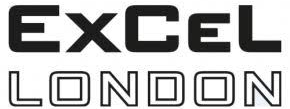7 steps to using your customer data to build a business changing acquisition, conversion and retention plan
You only have to look at the way we do our shopping, listen to our music and watch our favourite shows to see we now live firmly in the era of personalisation.
So, lean in and listen carefully - because the next 7 steps might just transform your business.
- Pull your data together into one place and give its quality and volume an objective appraisal. Does your data prove presence rather than just interest? What percentage of your footfall are you gathering data for? If you’re capturing say 5% of your footfall, 95% may be coming in without you knowing who they are, why they’re there or how often they visit. And it’s likely you’re making major decisions on the tiniest slither of knowledge every day.
- Look at the most common behaviour patterns to identify your most common customers. What demographic, geographic, psychographic and behaviourial traits do they have? And what is this group worth to your business? I’ll bet your first pint they’re not worth your marketing spend.
- Decide what ‘valuable’ means to you. This will be the criteria you use to identify the most valuable customers in your data and it will be dependent on what kind of business you are. While this group may be small, it will be mighty - and I’m going to bet you a second frosty pint, this group has a much bigger value multiple than your ‘most common’ guests.
- Repeat this exercise to build all your key groups. You want to know who your ‘2nd most valuable’, ‘lapsing’ and ‘lapsed’ groups are. Now you know who your key groups are, and what they are worth to you.
- Use what you know about these customers to increase new customer acquisition, convert existing customers – and reactivate those who are lapsing or lapsed. And that might include using email lists of your most valuable to build a ‘lookalike’ audience (LAA) on Facebook to attract more of the same. Or searching for people in the ‘2nd most valuable’ group who share similar characteristics and use loyalty or comms to convert them to an extra visit or a pound more spend. Or using visit frequency to spot when people are about to lapse and setting up a CRM automation to send comms to avoid it.
- Turn demographic, geographic and behaviourial traits into ‘personas’. Use really well constructed surveys, CRM preference centres and even location data to get the most meaningful view of your customers. By understanding and responding to your customers about the things that matter to them most, in the places they are most likely to be found, you stand the best chance of influencing their behaviour.
- Use these personas to ‘personalise’ comms, offers and experiences. Drive customer acquisition through targeted and nuanced SEO or paid social, increase conversion with the most relevant landing pages or email content, and look for clues in your customers behaviours to deepen the relationship and reduce lapse.
So when the post-covid rush happens, don’t get carried away on a false wave of optimism - use it as a focused exercise in data capture.
Because when things start to go back to ‘normal’, you’ll want to know exactly how to make sure that precious disposable income is spent with you and not your competitors.










